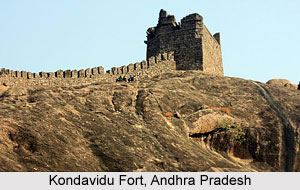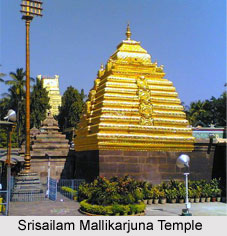 Reddy Dynasty was founded in portions of Southern India by Prolaya Vema Reddy during 1325 to 1448 CE. The area which was controlled by the Reddy Dynasty is a part of the present-day coastal regions of the state of Andhra Pradesh. History states that Prolaya Vema Reddy belonged to a confederation which had initiated a movement against the Muslim armies who belonged to the Delhi Sultanate and had invaded this area in 1323 CE. Prolaya Reddy, however successfully evicted the invaders from Warangal.
Reddy Dynasty was founded in portions of Southern India by Prolaya Vema Reddy during 1325 to 1448 CE. The area which was controlled by the Reddy Dynasty is a part of the present-day coastal regions of the state of Andhra Pradesh. History states that Prolaya Vema Reddy belonged to a confederation which had initiated a movement against the Muslim armies who belonged to the Delhi Sultanate and had invaded this area in 1323 CE. Prolaya Reddy, however successfully evicted the invaders from Warangal.
History of Reddy Dynasty
The Kakatiya age witnessed the arrival of Reddy clans. The Kakatiya rulers used to appoint Reddy chiefs for the positions of soldiers and generals, during their regime. Reddy clans were believed to be the feudatories of Pratapa Rudra, who was a Kakatiya king. These Reddy clans protected their land from the Muslim invaders by fighting battles against Muslim sultans. However, Pratapa Rudra was taken prisoner by the army of the Delhi Sultanate, after they had captured Warangal. The downfall of the Kakatiya empire in 1323 CE, following the demise of Pratapa Rudra spelled independence for the Reddy chiefs. Eventually, Prolaya Vema Reddy declared their independence and founded the kingdom of the Reddy clans in the area of Addanki.
The Reddy chiefs is said to have ruled the central and coastal areas of Andhra Pradesh from the period of 1325 to 1448 CE. The kingdom of the Reddy clans extended from Simhachalam to Kanchi in the south and Srisailam in the western side. Addanki was the very first capital of the Reddy kingdom. Thereafter, the capital of the Reddy kingdom was shifted to Rajahmundry and Kondavidu. Two significant hill forts were built by the Reddy clans. One of them is the a beautiful fort at Kondavidu, which is located at a distance of nearly 30 km west of Guntur district and another is situated at Kondapalli which is based about 20 km north of the area of Vijayawada. The other major historical forts created in the Reddy kingdom include the forts of Nagarjunakonda, Vinukonda and Bellamkonda which existed in Palnadu. The Reddy Dynasty was at the pinnacle of power until the 15th century. They were replaced by the Gajapatis of Odisha who conquered the coastal regions of Andhra Pradesh. Finally, Gajapati Prataprudra Deva lost his empire to Krishna Vijayanagara and thus Gajapatis were no longer the rulers of the Reddy kingdom. Therefore the territories of Reddy kingdom came under the jurisdiction of the Vijayanagara Empire.

Rulers of Reddy Dynasty
The rulers of Reddy dynasty included Prolaya Vema Reddy, Anavota Reddy, Anavema Reddy, Kumaragiri Reddy, Katayavama Reddy, Pedakomati Vemareddy, Racha Vema Reddy and numerous others. Prolaya Vema Reddy was the very first ruler of the Reddy Dynasty. This king had gathered a gigantic army of herdsmen and employed the techniques of guerrilla warfare.
Religion of Reddy Dynasty
The kings of Reddy Dynasty fought with the Muslim invaders and re-established Hindu Dharma in the Reddy kingdom. The empire established by Prolaya Vema Reddy laid the strong foundations of Hindu Dharma. The Reddy rulers bestowed agraharas to Brahmins and ensured that the Hindu temples of Ahobilam and Srisailam had timely repairs. The Narasimha Swamy Temple located at Ahobilam was constructed during the reign of Prolaya Vema Reddy. He is said to have created as many as 108 temples dedicated to Lord Shiva.
Literature of Reddy Dynasty
The field of Telugu literature saw significant improvement during the rule of the Reddy rulers. The Sanskrit language was favoured by the Reddy kings. Numerous Reddy rulers were learned scholars. Potana, Srinatha and Errapragada were amongst the notables poets who were patronised by the royal families during the age. Errapragada was renowned for his translated work of the Hindu epic of Mahabharata. He also composed Narasimha Purana and Hari Vamsa. It is believed that Srinatha was the most gifted writer during that time and he was a poet in the court of Pedakomati Vemareddy. Srinatha`s works involve `Sivaratrimahatmya`, `Kasikhanda`, ``Pandita-radhya Charita`, `Haravilasa` and many more. His work on `Palnadu Viracharitra` is quite famous. Gona Buddha Reddy`s `Ranganatha Ramayanam` has also earned sufficient praise.
Administration under Reddy Dynasty
The administration was based on the system of the `Dharmasutras`. The rulers used to impose about one-sixth of the agricultural surplus as tax. During the reign of Anavota Reddy, custom duties and taxes on trade activities were ceased. Therefore, trade used to flourish under the rule of Reddy Dynasty. The port of Motupalli was the area through which sea trade was performed. Brahmins were granted `agraharas` by almost all the Reddy kings. Caste system was followed.



















